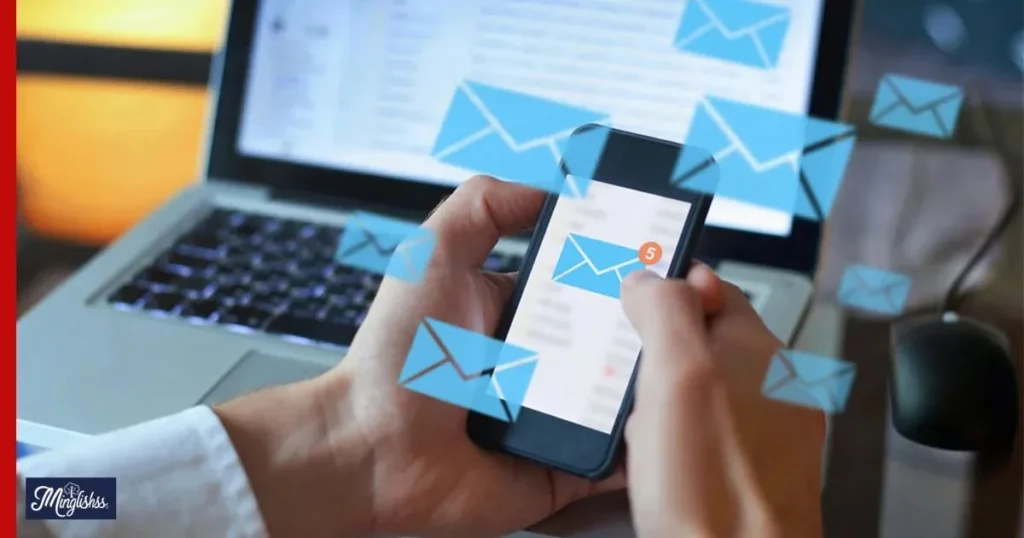“Enhance your correspondence by exploring alternative phrases to ‘Please find enclosed’ for more engaging communication!”
When crafting professional or personal correspondence, “Please find enclosed” is a staple phrase used to refer to attached documents. However, repetitive use of this phrase can feel monotonous or overly formal, especially in diverse communication contexts.
By using alternative expressions, you can add variety and flexibility to your messages. Whether you’re drafting a cover letter, sharing project updates, or sending formal proposals, choosing different phrases keeps your communication fresh and engaging.
This blog will present 35 alternative ways to say “Please find enclosed,” each explained through scenarios, detailed subject explanations, and additional tips to make your communication more effective.
1. “Enclosed, you will find…”
Scenario: Maria sends a package to her client and wants to highlight an invoice attached inside.
Explanation: This phrase keeps the tone formal and is perfect for business correspondence. It directly points to the document or item being enclosed, maintaining professionalism.
Additional Tip: Use this phrase in letters or emails where maintaining formality is crucial.
2. “I’ve attached”
Scenario: John emails his manager a report on recent sales trends.
Explanation: This modern and concise phrase is ideal for digital communication. It’s simple and direct, making it suitable for emails.
Additional Tip: Avoid overusing this phrase in longer emails to prevent sounding repetitive.
3. “You’ll find the attached document below.”
Scenario: Emily sends a follow-up email with the details of her upcoming project.
Explanation: This phrase emphasizes the location of the attachment and is suitable for casual yet professional settings.
Additional Tip: Always double-check that the document is actually attached before sending.
4. “Attached is”
Scenario: Alex emails a university application form to the admissions office.
Explanation: This phrase is straightforward and works well in both formal and semi-formal situations. It focuses attention on the attached file.
Additional Tip: Use this for single documents to keep communication clear and concise.
5. “Here is”
Scenario: Rebecca sends a presentation to her colleague after a brainstorming session.
Explanation: This phrase is friendly and direct, making it a good fit for less formal communications.
Additional Tip: Pair this with a brief description of the attachment to provide context.
6. “I’ve included”
Scenario: Michael shares a project timeline with his client for approval.
Explanation: This alternative is casual and works well in professional emails where you want to keep a conversational tone.
Additional Tip: Use this to convey that the attachment is part of a comprehensive discussion.
7. “As requested, I’m sharing”
Scenario: Lily responds to a client’s email, providing the requested marketing materials.
Explanation: This phrase highlights that the attachment fulfills a specific request, showing attentiveness.
Additional Tip: This is particularly effective in follow-up emails to establish clarity.
8. “Please refer to the attached file.”
Scenario: Kevin submits a financial report to his company’s finance team.
Explanation: This is formal and clear, directing the recipient to look at the attached file for details.
Additional Tip: Use this phrase when referencing attachments containing crucial information.
9. “Attached for your review is”
Scenario: Olivia shares a draft of her design proposal with a potential client.
Explanation: This phrase signals that the attachment requires feedback, making it interactive.
Additional Tip: Pair this with a call to action to encourage timely responses.
10. “Kindly find attached…”
Scenario: Ethan sends his CV to a hiring manager for a job application.
Explanation: This is polite and formal, commonly used in professional correspondence.
Additional Tip: Use this in contexts where you want to project respect and professionalism.
11. “Included in this email is…”

Scenario: Chloe shares a meeting agenda with her team ahead of a weekly check-in.
Explanation: This phrase keeps the tone neutral and points to a single attachment.
Additional Tip: Be specific about what is included to avoid confusion.
12. “Please review the enclosed…”
Scenario: Ryan submits a legal document for review to his attorney.
Explanation: This formal phrase indicates that the recipient is expected to review the attachment.
Additional Tip: Ideal for documents requiring feedback or approval.
13. “The attached file contains…”
Scenario: Sophia sends a project report detailing recent progress to her supervisor.
Explanation: This phrase gives context to the attachment, explaining its purpose or content.
Additional Tip: Use this when sharing files that need a brief explanation.
14. “In this email, I’ve included…”
Scenario: Mark shares quarterly performance statistics with his team.
Explanation: This phrase sets the expectation that multiple attachments might be included.
Additional Tip: Ensure to list each attachment for clarity.
15. “Enclosed, you’ll see…”
Scenario: Sarah sends a proposal document to a potential client for review.
Explanation: This slightly formal phrase maintains professionalism and directs attention to the attachment.
Additional Tip: Use this in follow-up communications to refer to previously sent attachments.
16. “For your reference, I’ve attached…”
Scenario: Lucas sends his supplier a catalog of available products.
Explanation: This phrase sets the expectation that the attachment is for the recipient’s reference or future use.
Additional Tip: Use this phrase for informational attachments that don’t require immediate action.
17. “I’m sending you the following attachment…”
Scenario: Ava emails her teacher with a completed homework assignment.
Explanation: This phrase is direct and clear, ideal for a formal academic or business context.
Additional Tip: Use numbered lists or bullet points when including multiple attachments.
18. “Attached to this message is…”
Scenario: Noah submits a detailed project proposal to his team leader.
Explanation: This phrase keeps the tone formal and is excellent for business reports or official correspondence.
Additional Tip: Add a brief explanation about the file to provide clarity.
19. “I’ve uploaded the file for your review.”
Scenario: Mia shares a draft marketing plan with her remote team via email.
Explanation: This modern phrase is great for digital communication, especially when using cloud-based file-sharing tools.
Additional Tip: Include the link or specific location of the uploaded file to avoid confusion.
20. “Here’s what you asked for.”
Scenario: Liam responds to his colleague’s request for the latest client list.
Explanation: This casual phrase is suitable for informal or semi-formal emails and acknowledges the recipient’s earlier request.
Additional Tip: Use this only when you’re confident the recipient will immediately recognize the attachment’s purpose.
21. “I’ve provided the file below for your convenience.”
Scenario: Emma sends a copy of meeting minutes to all team members.
Explanation: This phrase adds a polite touch while pointing out the attached file.
Additional Tip: Be consistent with your file-naming conventions to make attachments easy to locate.
22. “See attached for details.”
Scenario: Jack forwards a billing invoice to his customer for payment.
Explanation: This brief and professional phrase encourages the recipient to open the attachment for more information.
Additional Tip: Pair this with a short summary in the body of the email.
23. “I’ve attached the requested file.”
Scenario: Isabella sends the requested documentation to her HR manager.
Explanation: This phrase is courteous and highlights that the attachment meets a specific request.
Additional Tip: Use it when responding promptly to a recipient’s specific needs.
Other Ways to Say “Please Provide Feedback”
24. “You’ll find the document attached for your perusal.”
Scenario: Ethan sends a draft article to his editor for feedback.
Explanation: This formal phrase suggests the recipient should carefully review the attached document.
Additional Tip: Use this when sharing complex or detailed files that need attention.
25. “I’ve included the necessary documents.”
Scenario: Sophia submits her application package to a university admissions office.
Explanation: This polite and formal phrase works well when including several attachments.
Additional Tip: List the documents included to ensure nothing is overlooked.
26. “The attached document outlines…”
Scenario: Liam sends a project timeline to his manager.
Explanation: This phrase provides a hint about the attachment’s content, giving the recipient context.
Additional Tip: This is useful when sharing attachments that require further action or discussion.
27. “Find the document attached herewith.”
Scenario: Olivia sends her company’s terms and conditions to a new client.
Explanation: This traditional phrase is formal and suits legal or official correspondence.
Additional Tip: Use this sparingly to avoid sounding overly formal or outdated.
28. “Here’s the file you requested earlier.”
Scenario: Noah emails a coworker who had asked for a sales report.
Explanation: This friendly phrase acknowledges the recipient’s earlier request and builds rapport.
Additional Tip: Personalize this phrase by referencing the context of the earlier conversation.
29. “Attached here is what you need.”
Scenario: Emma sends her graphic design portfolio to a potential employer.
Explanation: This phrase is casual yet professional, suitable for informal work settings.
Additional Tip: Add a short note about the attachment’s purpose for clarity.
30. “You’ll find the necessary files attached.”
Scenario: Jack forwards a set of blueprints to an architect for review.
Explanation: This phrase signals that the recipient should review multiple attachments.
Additional Tip: Label the files clearly to make navigation easier for the recipient.
31. “I’ve included the relevant document for you.”

Scenario: Ava shares her travel itinerary with her manager for approval.
Explanation: This polite and formal phrase is effective for sharing files that directly impact decision-making.
Additional Tip: Mention the document’s relevance to the conversation or task at hand.
32. “Attached, you’ll find the material needed.”
Scenario: Lucas sends a training manual to a new hire.
Explanation: This phrase maintains professionalism while subtly pointing to the attachment.
Additional Tip: Pair this with a friendly welcome message for onboarding scenarios.
33. “For your convenience, I’ve attached the document.”
Scenario: Isabella shares an updated policy document with her team.
Explanation: This phrase emphasizes that the attachment is provided as a helpful resource.
Additional Tip: Mention if the document is a revised version to avoid confusion.
34. “I’m sending along the file you might need.”
Scenario: Mia sends a troubleshooting guide to a client experiencing technical issues.
Explanation: This phrase is casual and useful when sharing information proactively.
Additional Tip: Include a brief explanation of why the recipient might need the attachment.
35. “Here’s the information you’re looking for.”
Scenario: Ethan sends product specifications to a supplier for manufacturing purposes.
Explanation: This casual phrase is ideal for follow-ups or customer support emails where the recipient expects the file.
Additional Tip: Personalize this phrase by referencing the recipient’s query to add a professional touch.
Conclusion
Expanding your vocabulary with alternatives to “Please find enclosed” not only diversifies your communication style but also enhances clarity and professionalism. Whether in digital or traditional correspondence, these phrases allow you to tailor your tone to the recipient and context.
Experiment with these alternatives to create polished, engaging messages that leave a positive impression every time. Effective communication begins with the right words—choose wisely!

Hi, I’m Lauren Reynolds: I bring creativity to English lessons, mixing fun with learning. My goal is to inspire students to explore and enjoy the language.










